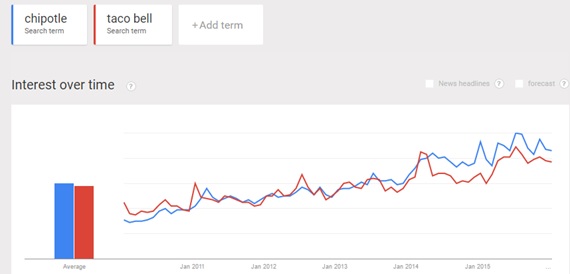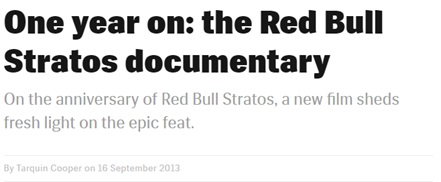Defining a brand strategy should always
be prior to SEO or any other marketing activity. Branding is what
dictates the direction that marketing should take, and helps make the
right judgement call. In other words, a well curated branding strategy
brings purpose and consistency to everything that a brand does. This is
why an SEO strategy can only be as good as a brand strategy is. When SEO
is built on the foundations of a brand, it is more likely that it will
increase the authoritativeness and relevancy, and in turn this will
impact brand KPIs.
If we imagine that all the links were
acquired naturally, we could say a lot about a brand by looking at its
backlinks profile, like the awareness that different campaigns generate,
for example. This is the direction that things are taking, Google even
posted on their blog recently reminding bloggers to use no follow and
disclose relationship when they’re writing a promotional post.
There’s no arguing that this is the only
way of approaching links, but how effective is it? Links are an
important ranking signal, and brands want to keep up with their
competitors. Is branded content enough to get all the links a brand
‘need’ to be on top of their game? And how much does a branded digital
PR strategy actually impact links?
I will explore this by comparing the
backlink profiles of brands that have a well-defined branded strategy
with their main competitors.
Chipotle
Chipotle is known for its mission of
delivering food with integrity, and this positioning dictates all of
their marketing activities. This strategy had very good results, sales
went up, and it generated more awareness, as we can see on this Google
Trends image:
It was only in 2014 that there were more searches for ‘Chipotle’ than for ‘Taco Bell’, its main competitor:
Can we also verify this positive trend
in Chipotle’s backlink profile? I would expect so but to answer that
question, let’s look at their Trust and Citation Flow and Topical Trust
Flow:
Taco Bell has a higher Trust Flow than
Chipotle, however the latter is getting links from a more diverse set of
sources and their topical trust flow are in line with the brand’s
strategy.
Something else I’m interested in looking
at is the history of the referring domains to see if it reflects what’s
been happening with the brand – from their main marketing stunts to any
particular situation they had to deal with.
Looking at this graph I would say that
it reflects what’s been going on with Chipotle and its main competitor.
Chipotle came from behind and got more domains linking to them than Taco
Bell in mid 2014/early 2015, however things changed again in mid 2015.
In fact, Chipotle faced a few problems in that year, like the E.coli situation, and this might help to explain what we see here.
Let’s move to another example:
Domino’s
Domino’s not only changed its product
(improved the quality of their pizzas) back in 2009 but it also changed
its communication strategy and fully embraced digital. This impacted sales positively, and gave the brand a place on tops like the most loved brands by youth in the UK. Can we get any insights about this based on their backlink profile?
Looking at the Trust and Citation Flow,
Domino’s is clearly ahead of its competitors in the UK, and it also has a
bigger number of domains linking to their website.
Before 2013, Domino’s had roughly the
same number of referring domains than Pizza Hut, however this situation
changed in early 2014 and we see the brand getting the biggest number of
referring domains more frequently, possibly due to Domino’s marketing
efforts.
Let’s look at a last example:
Red Bull
This time I will look at a brand that
creates a lot of buzz quite frequently, Red Bull, to see if the links
that they get might be related to their content strategy. For
consistency purposes, I will compare this brand with its main
competitor, Monster Energy.
Looking at the referring domains for
both brands, we see that Red Bull has more peaks than Monster Energy, so
I will make the assumption that those are not due to an industry trend
but to Red Bull activities. Multiple things can explain those peaks, but
I would expect some correlation with their content strategy. The
biggest peak happens around September 2013 so I did a time framed search
to see if there was anything going on at that time that might explain
this, and this is what I found:
Around September 2013, Red Bull released
a documentary about one of their most popular campaigns, the Strato
Jump, and this probably led to more websites linking to them.
Conclusion
A good brand is one that knows who it is
talking to, is consistent and knows how to get the message across. If
everything works well, when a brand launches a new campaign, this will
have an effect on brand KPIs like brand awareness, word of mouth, sales,
and it will generate more links.
The purpose here was to explore if a
branded strategy can impact a brand’s backlinks profile. There’s only so
much we can say by looking at 3 examples, however I believe that we can
see some correlation here. A branded strategy doesn’t necessarily mean a
higher Trust Flow but it can impact the number of links a brand gets
and their relevancy, and we can always expect that to influence the
Trust Flow positively. Any marketing team can match the content plan
against its backlink profile to analyse if there’s any correlation
between campaigns and links, and do the same thing for their
competitors, this will give some insight about how people react to
different campaigns and what generates more awareness, which can be very
useful to any brand working on its content strategy.
——————————————————————————————————————————————————
Ana Verissimo is the head of brand of 90 Digital, a digital marketing agency with SEO at its core.







Aucun commentaire:
Enregistrer un commentaire